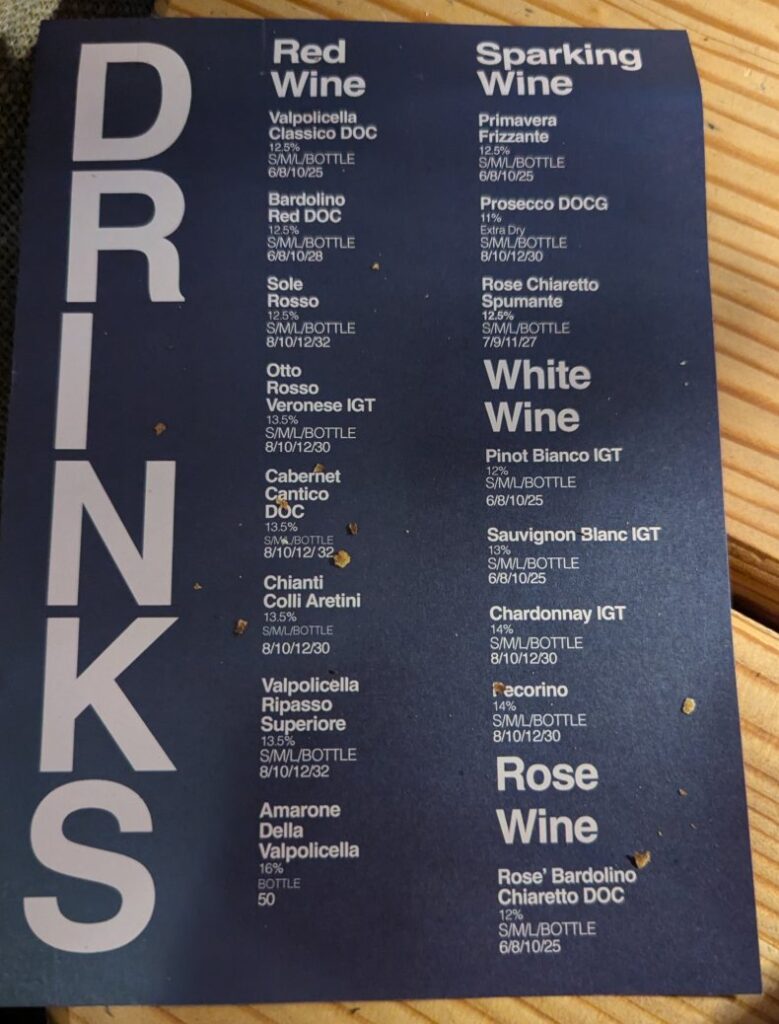A noticeable trend in informal hospitality is the slow demise of the wine list. Fewer people are drinking wine when eating out, largely due to affordability issues. The rising costs in hospitality, driven by duty increases, environmental packaging regulations and national insurance, make both customers and proprietors more cautious. For proprietors, there is less incentive to curate and maintain a thoughtful wine list when demand is falling, and this leads to a gradual erosion of what was once a point of pride.
A recent experience illustrated this perfectly. In the UK, at an otherwise excellent Italian market and pizzeria, which I will keep anonymous, I found myself puzzled by their current wine list. In the past, they had prided themselves on importing high-quality Italian food and wine, with the best Valpolicella Ripasso I’ve had in such a setting and a broader, Italy-focused list that complemented their offering beautifully. This time, however, things were very different.

To begin with, both Valpolicella wines, by the glass, on the menu were unavailable, which was a disappointment. Next came the oddly printed category of ‘Sparking’ wine rather than ‘Sparkling’, which did little to inspire confidence. On offer was a Prosecco DOCG rather than DOC, which in theory is a lovely detail, but the difference and the cost to the proprietor would be lost on most diners.
The white wine section was particularly curious. Chardonnay and Sauvignon Blanc, even if Italian IGT, seemed out of place, presumably added to suit English expectations. Yet more authentic and regionally aligned options such as Vermentino, Gavi or Soave would have made far more sense. Similarly, Pinot Bianco was listed, which left me wondering why the obvious crowd-pleaser, Pinot Grigio, was missing.
There were also practical issues. The sizes of small, medium and large glasses were not clearly indicated, leaving customers uncertain, while the pricing was confusing enough to resemble dates rather than costs, at first glance.
This left me with the strong impression that less care and attention is being given to wine lists just when more is needed. A well-chosen and clearly presented list can encourage people to order wine, to experiment, and to enjoy the hospitality experience more fully. As margins tighten, this area should not be neglected. If anything, the wine list should be used as a tool to bring people back to drinking out, not as an afterthought.
Update: I contacted them via Instagram to let them know about this article and all I got was an automated reply telling me how I could book a table.













